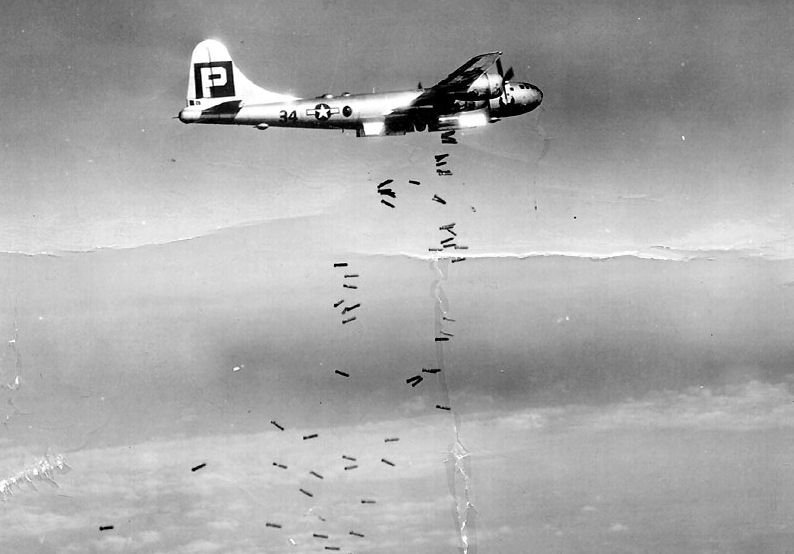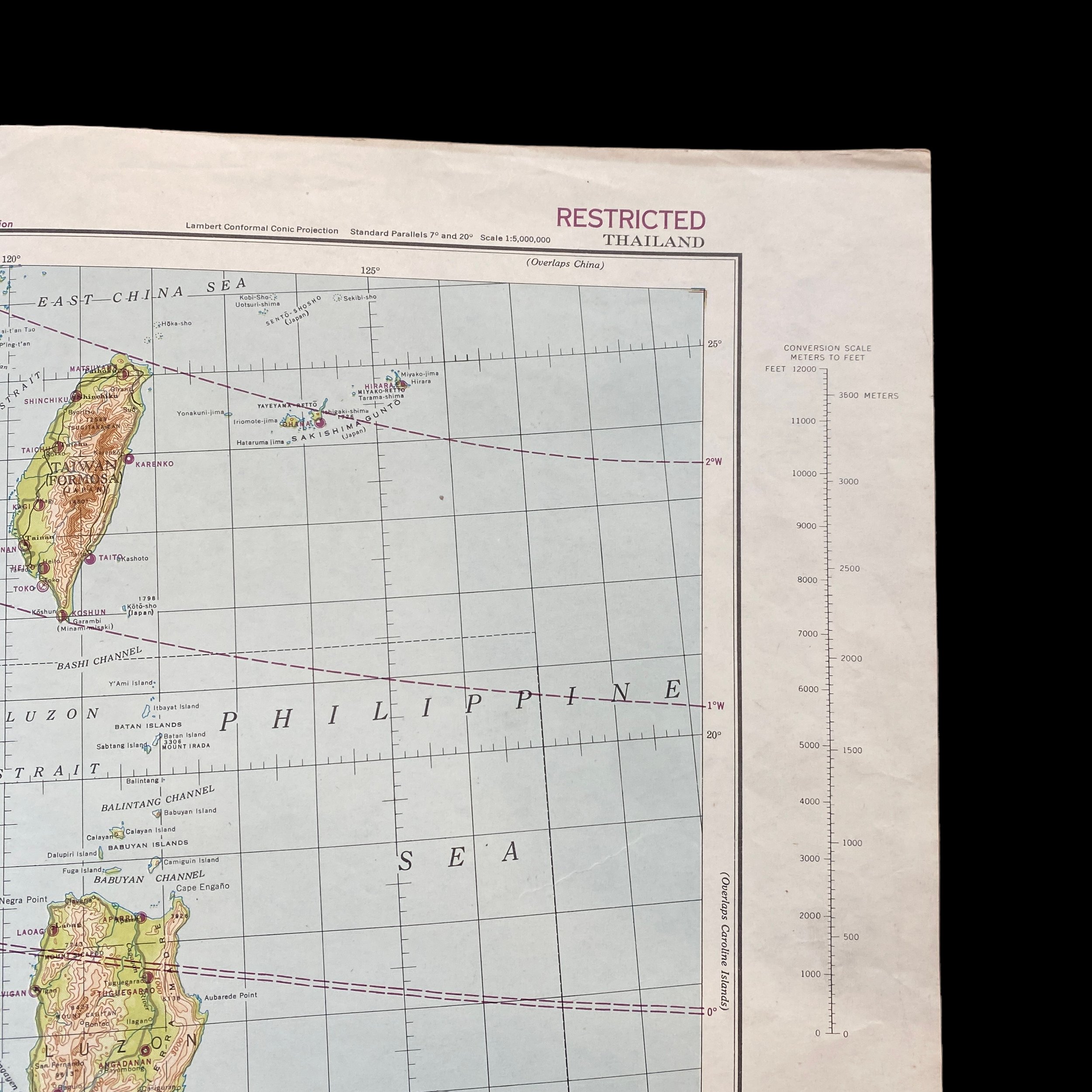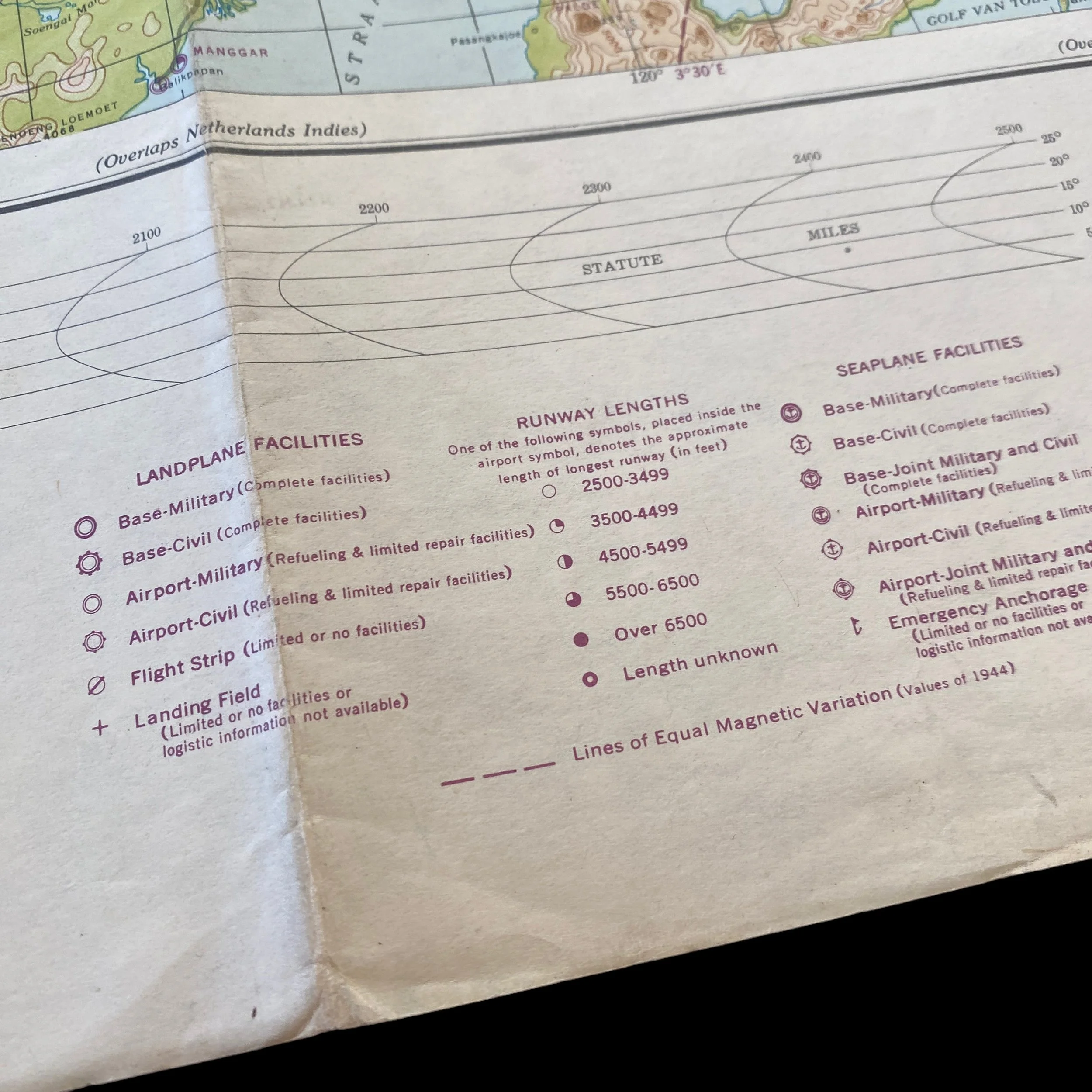RARE! WWII "FIRST EDITION" 1945 Luzon Raid Mission USAAF Heavy Bomber Air Raid Mission Navigation Map










































RARE! WWII "FIRST EDITION" 1945 Luzon Raid Mission USAAF Heavy Bomber Air Raid Mission Navigation Map
Comes with a hand-signed C.O.A. and a full historical research document/write-up
This rare and museum-grade “FIRST EDITION” U.S. navigators mission map is marked “RESTRICTED” and was heavily used during U.S. bombing raids on the Pacific Theater. Dated February 1945, this RESTRICTED air map aided Allied forces in their missions across the vast expanse of the Pacific Ocean.
The year 1945 marked a critical juncture in World War II, with the Allied forces intensifying their efforts to bring the conflict to a decisive end. One of the pivotal battlegrounds during this period was the Philippines, specifically the island of Luzon. The United States, having regained control of the Philippines from Japanese occupation, initiated a series of bombing raids on Luzon with the objective of weakening Japanese military capabilities and hastening the end of the war in the Pacific.
The Japanese invasion of the Philippines in 1941 marked a dark chapter in the nation's history, with the infamous Bataan Death March symbolizing the brutality of the occupation. General Douglas MacArthur's promise to return was fulfilled with the successful recapture of the Philippines in 1944, particularly the strategic island of Leyte. As the Allies progressed towards Luzon, they encountered stiff Japanese resistance, prompting the need for a strategic and powerful response.
The US bombing raids on Luzon in 1945 were multifaceted, with strategic, tactical, and psychological objectives. Firstly, the raids aimed at crippling Japanese military infrastructure, including airfields, naval bases, and communication networks. By targeting these key installations, the Allied forces sought to disrupt Japanese supply lines and hinder their ability to reinforce and resupply their troops.
Secondly, the bombing raids had tactical significance in supporting the ground offensive. As American and Filipino forces advanced on Luzon, air superiority was crucial for ensuring the safety of ground troops and maximizing their effectiveness. The bombings were designed to soften Japanese defenses, destroy fortifications, and pave the way for a successful amphibious assault.
Lastly, the psychological impact of the bombing raids cannot be overstated. The devastating aerial assaults on Luzon were intended to demoralize Japanese forces and erode their will to fight. By targeting urban centers and civilian infrastructure, the Allies sought to break the spirit of the Japanese populace, undermining their support for the war effort.
The US bombing raids on Luzon were executed with precision and intensity. American airpower, including B-29 Superfortresses and carrier-based aircraft, played a crucial role in delivering a barrage of bombs on key targets. The raids were not limited to military installations; major cities, including Manila, were subjected to intense bombing campaigns. The collateral damage, however, was a tragic consequence, as civilian casualties mounted.
One of the most notable events during the bombing campaign was the Battle of Manila, which unfolded in February 1945. The intense urban warfare, coupled with heavy bombing, resulted in significant destruction and loss of life. The Allies faced challenges in distinguishing between military and civilian targets, leading to widespread devastation in the city.
The US bombing raids on Luzon significantly contributed to the overall success of the Allied forces in the Pacific theater. By systematically dismantling Japanese military infrastructure and sapping the morale of both soldiers and civilians, the raids weakened the resolve of the Japanese Imperial Army. The subsequent ground offensive on Luzon, spearheaded by American and Filipino forces, was facilitated by the strategic advantage gained through the bombing campaigns.
The rapid progress of the Allied forces on Luzon, coupled with the success of the bombing raids, set the stage for the eventual liberation of the Philippines. The bombings served as a precursor to the climactic Battle of Okinawa and, ultimately, the dropping of atomic bombs on Hiroshima and Nagasaki, leading to Japan's surrender and the end of World War II.
The US bombing raids on Luzon in the Philippines in 1945 were a critical and controversial chapter in the final stages of World War II. While the strategic objectives were largely achieved, the human cost, both military and civilian, cannot be ignored. The raids on Luzon underscore the complex and morally challenging nature of warfare, where strategic necessity clashes with humanitarian concerns. As we reflect on this historical episode, it is essential to recognize the sacrifices made and the lessons learned, ensuring a more nuanced understanding of the complexities inherent in armed conflict.
Air Navigation and Target Maps: The Key to Success:
The success of the Allied efforts in the Pacific Theater can be attributed in large part to the effective utilization of air navigation and target maps like the "Air Navigation Chart." These maps were instrumental in planning and executing missions that were critical to achieving strategic objectives.
Island-Hopping Strategy: The island-hopping strategy employed by the Allies involved capturing key islands in the Pacific to establish airfields and naval bases, gradually moving closer to the Japanese mainland. Air navigation charts were crucial in guiding aircraft between these islands, ensuring a safe and efficient route for troop transport and resupply missions.
Long-Range Bombing: The capture of Iwo Jima provided the Allies with a critical forward base for B-29 Superfortress bombers, which had the range to reach mainland Japan. Air navigation charts were used to plan these long-range bombing missions, considering factors like prevailing winds, fuel consumption, and target coordinates. The raids were instrumental in weakening Japanese defenses and demoralizing the enemy.
Precision Bombing: Daylight precision bombing required meticulous planning, as bombers had to fly at low altitudes to hit their targets accurately. Air navigation charts played a vital role in guiding the aircraft along specific flight paths, avoiding enemy defenses, and ensuring precise targeting.
Night Incendiary Raids: To maximize the impact of the night incendiary raids, which aimed to create firestorms in urban areas, air navigation charts helped bombers navigate through the darkness. The charts allowed pilots to identify landmarks and radio beacons to guide them to their intended targets.
Challenges and Risks Faced by Aviators:
Operating in the Pacific Theater presented immense challenges and risks for aviators. The vastness of the ocean, extreme weather conditions, and the relentless resistance from the Japanese forces posed significant threats.
Weather and Navigation: The vast stretches of the Pacific Ocean presented a navigational challenge for aviators. Strong crosswinds, unpredictable weather patterns, and long flight durations demanded precise navigation using air navigation charts to stay on course and reach their destinations safely.
Long Distance: The Pacific Theater covered a vast area, and many missions required long-range flights. These extended journeys meant that aircraft often flew close to their maximum range, leaving little margin for error in fuel consumption calculations.
Enemy Defenses: Japanese anti-aircraft fire and fighter aircraft posed a constant threat to the Allied forces. Aviators had to rely on evasive maneuvers and accurate navigation to avoid enemy defenses and complete their missions successfully.
Fatigue: Pilots and crew members faced fatigue during extended missions, such as the round-trip flights between the captured islands and the Japanese mainland. Maintaining focus and concentration was crucial to ensure the safe execution of their duties.